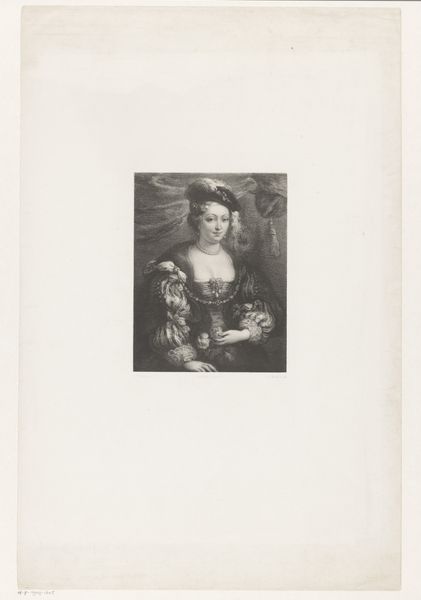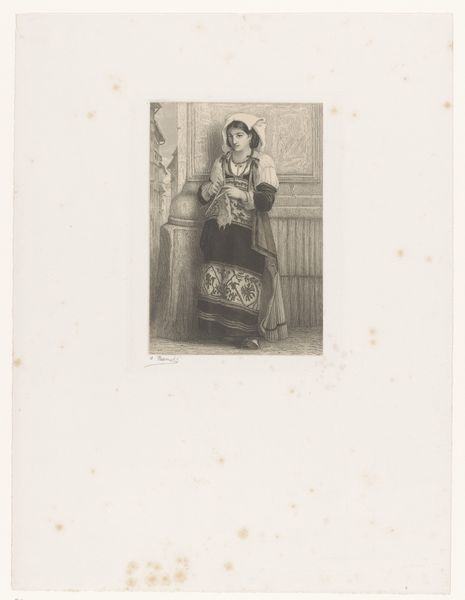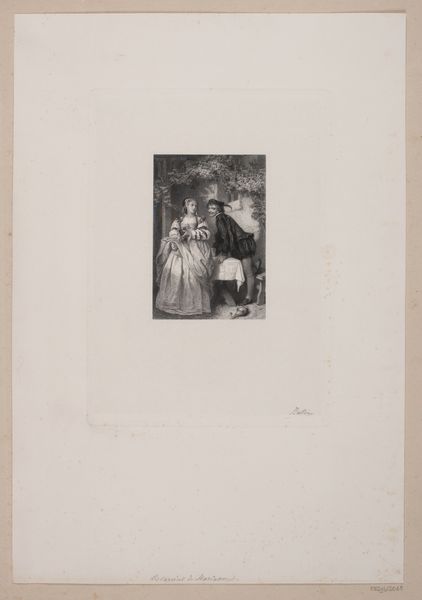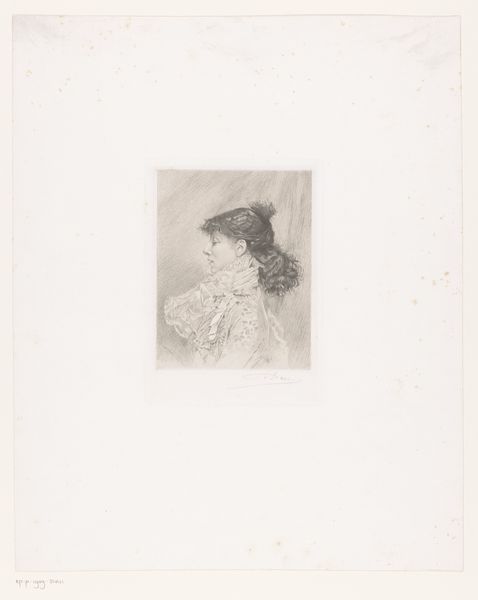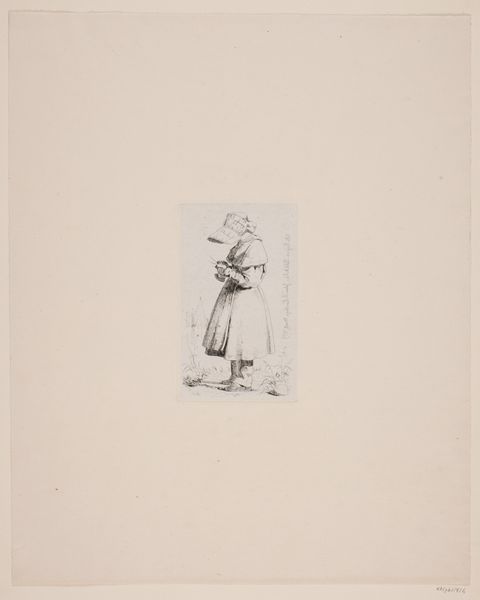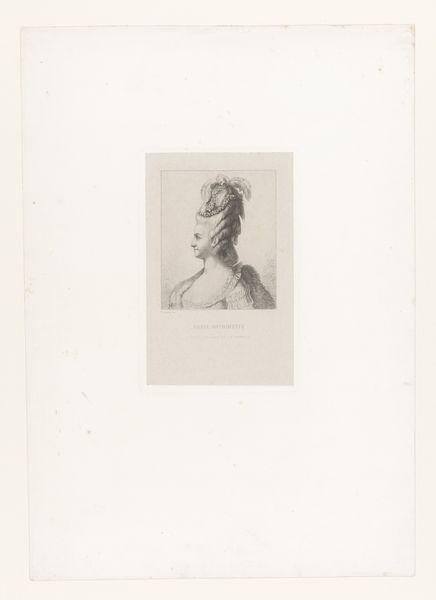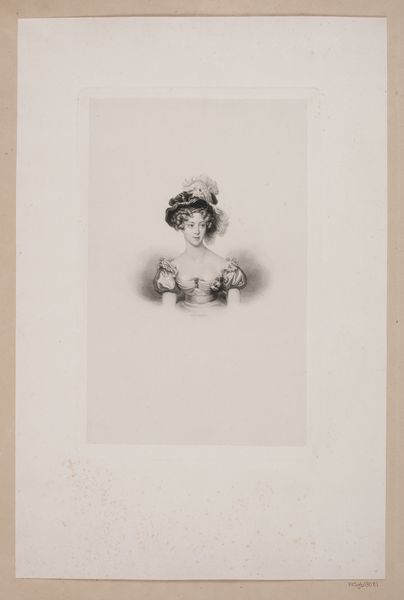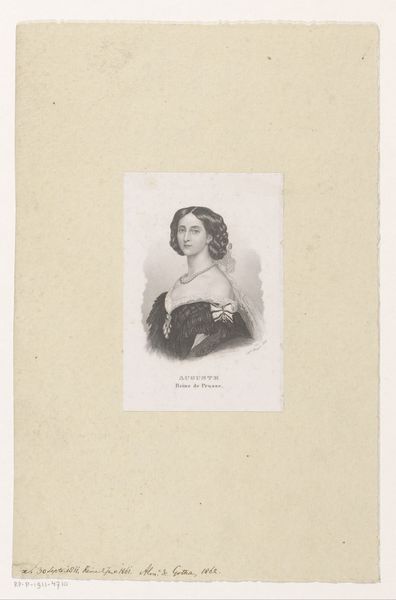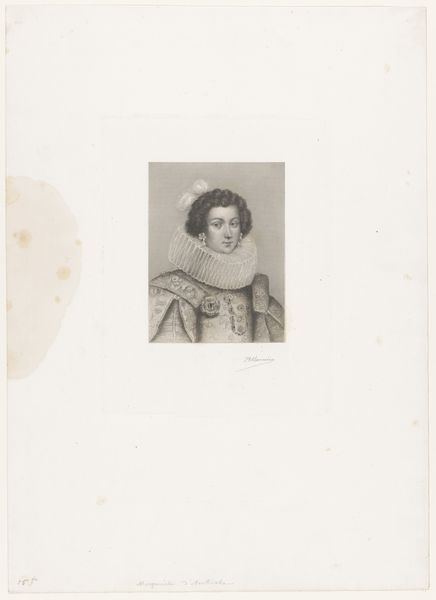
drawing, print, etching, paper
#
portrait
#
drawing
# print
#
etching
#
paper
#
realism
Dimensions: height 130 mm, width 101 mm
Copyright: Rijks Museum: Open Domain
Editor: This is "Lachend meisje" ("Laughing Girl") by Jean-Baptiste Anthony, likely made between 1864 and 1909. It’s an etching, a kind of print, on paper. There’s something very demure about her expression. What can you tell me about this work? Curator: The "laughing girl" portrait compels us to consider 19th-century European ideals of femininity. The delicate etching captures the subject's averted gaze and coy smile, hallmarks of prescribed female behavior within the rigid social structures of the time. This realism might reflect Anthony’s artistic choice, can we explore what role the printmaking plays within that setting? Editor: It feels a bit… distant, like a posed photograph almost, not a candid moment. Why printmaking, rather than painting? Curator: Printmaking democratized art; through multiples it allowed images of women – and constructions of gender – to circulate widely. Did this expanded visibility offer opportunities for empowerment, or further reinforce societal expectations? Consider also how her attire - that hat, the lacy collar – signifies her position within a certain social strata. How does dress code contribute to social power? Editor: So, her clothes tell a story about her place in society. Curator: Exactly. And that perceived 'distance' might also reflect the power dynamics between artist and subject, often male gaze. But maybe the woman participates knowingly in these constructed ideals of the time. A way for them to express their place? Editor: I hadn't thought of that, her own agency within the artwork and larger culture. Curator: Examining art through these lenses helps us unravel not just aesthetics, but the complex negotiations of identity, power, and representation embedded within. Editor: I’ll definitely look at portraits differently now. Thank you for opening up the historical and cultural significance!
Comments
No comments
Be the first to comment and join the conversation on the ultimate creative platform.
